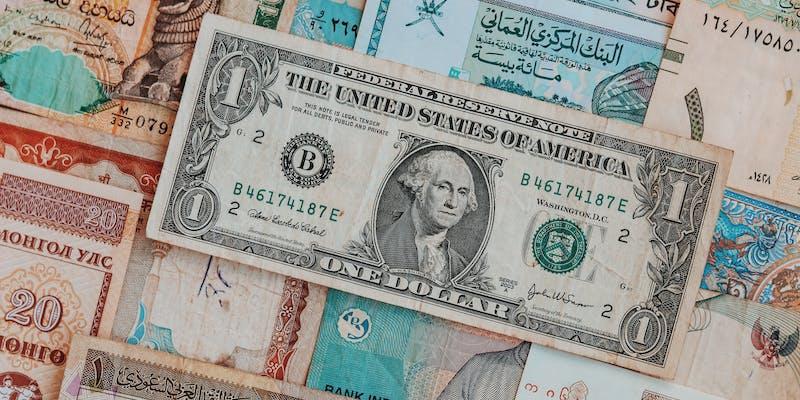The optimal currency area OCA theory believes that sharing a currency greatly boosts trade in a geographical region. However, the increased trade must justify the cost of countries losing their national currencies as tools for monetary policy adjustment. Canadian economist Robert Mundell brought this principle in 1961, constructing on earlier insights through Abba Lerner. The principle shows a great geographic vicinity for sharing a forex. This ideal place does not usually align with national obstacles. It can embody several international locations, components of several international locations, or regions within an unmarried country.
Mundell's concept, sponsored by empirical evidence, indicates that for a shared forex to be effective, sure conditions must be met. Those include labor mobility throughout the region, capital mobility and price and salary flexibility, comparable business cycles, and an important financial authority. The Eurozone, which includes 19 of the 27 EU Union countries, is a high instance. Since its inception in 1999, the Eurozone has seen a range of successes and challenges, reflecting the complexities of enforcing OCA theory in diverse financial and political environments.
Furthermore, studies display that inside the Eurozone, change extended with the aid of approximately 5% to 10% after the adoption of the Euro. This increment underlines the capability of a shared forex in improving monetary integration. However, the EU sovereign debt crisis of 2009-2012 highlighted the difficulties of a shared optimal currency areas benefits without unified financial regulations and financial structures.
Criteria for a Successful Optimum Currency Region

High Labor Mobility
It generally entails fewer and clearer rules, such as altering visa requirements, easing language differences, and providing formalities that enable people to retrieve their pensions or benefits in other countries. For example, the European Union has placed considerable emphasis on this point. Residents can go to work in any member state without a work permit. However, language and cultural differences are never easy. In contrast to the low legal barriers, cultural and linguistic barriers are still substantial for people from one member state to live in another. In 2018, just 3.8 % of EU citizens lived in a member state other than their country of origin.
Capital Mobility and Market Flexibility
An effective Optimum currency area requires freedom in the movement of capital and flexibility in prices and wages. This flexibility makes it easier for the economy to accommodate shocks by redirecting capital and labor to where needed. That's the ideal toward which the Eurozone, which has an optimal currency area OCA shared by economies of completely different characteristics, aspires. But challenges abound. For example, during the 2008 financial crisis, the imbalances in the flow of capital aggravated the economic tensions in countries such as Greece and Spain. In addition, wage and price flexibility differ considerably throughout the euro area, making uniform reactions to financial shocks impossible.
Risk-Sharing Mechanisms
Financial risks inter-country and the same optimal currency area OCA must be shared. This means running money from prosperous places to those people in difficult straits. When the European sovereign debt crisis became apparent, the absence of this kind of mechanism was glaring in the Eurozone. The crisis led to rethinking the old no-bailout rule for the European zone. In 2012, the European Stability Mechanism came into being, after which up to €500 billion could be lent to aid a distressed Eurozone country. Nevertheless, political opposition to fiscal transfers is one of its problems, seen in debates within countries such as Germany and the Netherlands.
Synchronized Business Cycles
For an Optimum place currency to work, member countries must collectively experience stages of economic growth and recession. If financial cycles are out of sync, a one-size-fits-all monetary policy could harm a few member states. The Eurozone again serves as an example: the important financial institutions' financial policy should cater to diverse economies like Germany's and Greece's. This task became obtrusive for the duration of the Eurozone crisis, wherein nations like Germany were in a higher financial position than others like Greece, making uniform monetary coverage selections tough and now and then counterproductive for certain member states.
Trade Volume
A key aspect of a successful, most effective currency location (OCA) is the quantity of change among the member international locations. While countries trade plenty with each other, they stand to advantage from using an unmarried currency. An Optimum place currency can make change easier and cheaper by eliminating the need to exchange currencies. However, if nations change plenty, it could also imply that they have strong industries that are unique from each other. For instance, if one U.S. a . is right at making vehicles and another at developing meals, they could trade those goods. However, this also means that their economies are exceptional, which may be a mission for an OCA.
Economic Diversity
The second criterion for an OCA is about the area's varied economies. Countries with diverse economies with different kinds of optimum currency area criteria industries are less likely to experience economic shocks that only affect one country. This diversity makes them better candidates for an OCA. In contrast, if a country mainly produces one type of good and other OCA members don't produce it, this country could face economic problems that don't affect the others. This situation can be problematic for an OCA.
Example of Optimum Currency Area

In 1999, the introduction of the euro provided an actual case study for the OCA (Optimal Currency Area) theory. However, when it began, there was a debate over whether the Eurozone met the four necessary conditions of Mundell's OCA theory. According to critics, this failure has resulted in the continued difficulties facing the Eurozone.
The OCA theory faced its greatest test ever in 2010. Several optimum currency area criteria countries in Europe with debt levels above 70 % had major financial difficulties that threatened the European Union's (EU) stability and created pressure on the euro. This situation revealed some of the underlying problems in the Eurozone.
According to Global Financial Integrity, a non-profit based in Washington, D.C., peripheral EU nations, frequently designated by the acronym PIIGS (Portugal, Italy, Ireland, Greece, and Spain), were experiencing slow economic growth. These countries also faced low international competitiveness and unproductive labor forces..




